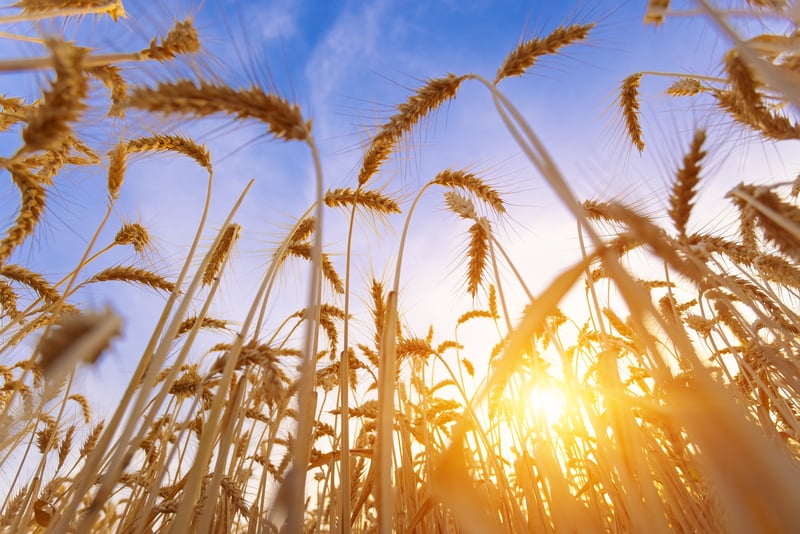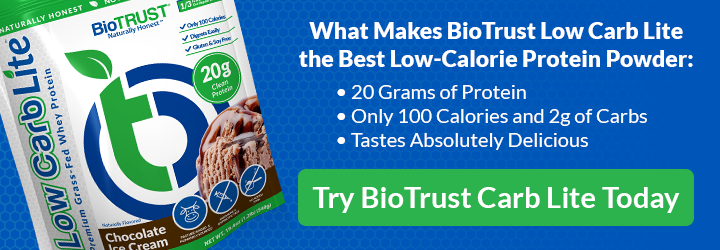Are Foods Produced in Europe Really Healthier?

For the last several years, there’s been a lot of debate over foods produced in the US vs. Europe and which is better. The differences largely stem from agricultural practices and regulatory approaches. But it also comes down to cultural values regarding food safety, quality, and preferences. Do these differences really make a difference in the overall health of the average American vs. the average European?
Are Europeans Healthier than Americans?
This is a complex question that’s influenced by a variety of factors, including healthcare, lifestyle choices, socio-economic conditions, and much more. But there is some evidence that many individuals in European countries do, in fact, tend to be healthier.
For instance, the average European has a longer life expectancy compared to the US. Spain comes in at #8, Italy at #6, and Switzerland is #4, living several years longer than the average in America, which comes in at 47. They also have longer health spans—that is, Europeans enjoy more years free from serious illnesses or disability, which is vital for quality of life.
Many Europeans also report better health outcomes than people in the States. This includes lower levels of heart disease and cancer. Obesity is also quite a bit higher in the US than in Europe. For instance, as of the most recent data (2017), ~41.9% of Americans are considered obese, indicating an increase of over 11% since 1999. That’s compared to 36.2% in Europe as of 2019. Sadly, those numbers are going up at alarming rates in many parts of the world.
Obesity is typically the result of several factors, including high calorie intake, poor diet quality, lack of physical activity, and genetic predispositions. Food additives may also have an indirect role by impacting taste preferences, appetite, or metabolism. But there’s still much we don’t know.
Diet and lifestyle factors have the largest effects. For instance, the Mediterranean diet, which is common in Southern Europe, is considered one of the healthiest in the world. This diet encourages greater consumption of healthy vegetables, fruits, whole grains, and quality fats like olive oil and avocados, which are associated with a lower risk of disease.
The American diet, on the other hand, includes more ultra-processed foods and sugars, which are often linked to poor health outcomes.
Europeans are also more likely to be physically active. This is partly due to city planning, which encourages walking and biking (and provides safer access to these activities). An active lifestyle also has a strong cultural aspect as people walk and bike more for transportation instead of hopping in a car, even to go short distances.
There are also social differences. Most European countries have universal healthcare systems, which provide greater access to affordable healthcare for their populations. This can lead to earlier detection and treatment of diseases, which would positively affect life and health span. There is also less income and education inequity and greater social supports for people with lower income levels in much of Europe. Both of which can contribute to better health outcomes.

Foods Produced in the US vs. Europe
Foods Produced in the US vs. Europe are also regulated and produced differently. Some of the key differences include:
- Chemical Inputs: The EU has more stringent food additive guidelines. For example, the Farm to Fork strategy demonstrates the EU’s goal to reduce the reliance on chemical inputs in agriculture. These countries are working to cut the use of pesticides and antimicrobial use by 50%, decrease the use of fertilizer, and increase organic farmland by 25% by 2030.The USDA takes a different approach, often focusing on large-scale farms that use chemical inputs and GMOs in an effort to increase overall yields to feed more people. That said, the two markets are more alike than they are different when it comes to food safety standards.
- Food Additives and Preservatives: The EU uses a precautionary principle, requiring more rigorous safety assessments before additives and preservatives are approved. That is, while the US tends to operate with the principle that additives are safe until proven otherwise, the EU’s guidelines require the ingredients be proven safe before being allowed in the food supply.As a result, several additives that are found in US foods are banned in the EU. This includes some growth hormones (e.g., rBGH or ractopamine), food dyes or coloring agents (e.g., Red #40, yellow #6, yellow #5, blue #1), bleaching agents (e.g., Azodicarbonamide), preservatives (e.g., BHA and BHT), and other chemicals (e.g., potassium bromate).In total, some 72 pesticides that are either banned or being phased out in Europe are still part of the US food system.
- Small-Scale and Local Farming: Europe, in general, places a higher value on supporting small-scale, local farms to produce high-quality, fresh foods with a focus on traditional European values in human health and environmental protection. In the US, support for hardworking farmers and access to organic produce, hormone-free animal products, and quality produce is increasing. However, the rules are significantly less stringent. And large-scale corporate farms that mass produce foods, with decisions being made far from where food is grown, are often the norm.
- Farm-to-Table Practices: If you grow your own food (even if you only have a small indoor garden), you already know fresh tastes best. Many areas in Europe focus on fresh foods that come from the garden to the table to be prepared. In the US, processed foods tend to be the standard. While this can be both time and cost-efficient, there’s also a cost in terms of how fresh the food tastes and how nutrient-dense it is.

What About Wheat?
Another common anecdote is that people who find it difficult to digest wheat or gluten in the US can better tolerate the grain found in Europe. Are there any differences between wheat foods produced in the US vs. in Europe?
In short, the answer is yes. And these differences could potentially affect how people’s bodies react to wheat products.
For instance, due to the different soil and growing conditions in the two regions, the majority of the wheat grown in the US is hard red wheat. This variety is high in gluten, the protein found in wheat (and other grains). Much of the wheat grown in Europe is soft wheat, which contains less protein (i.e., gluten).
Wheat grown in the US is also often exposed to a chemical called glyphosate. Because herbicides that contain this compound may disrupt the digestive system (and may be linked to some cancers, immunosuppression, endocrine disruption, and more, according to animal research), it (along with GMOs) has been banned in Europe.
The wheat may also be prepared differently. For instance, sourdough processes introduce probiotics, which can make the gluten easier to digest.
In addition, if you are buying store-bought bread in the US, it also likely has an additive called potassium bromate. This helps the bread (and other baked goods) rise higher for a softer, fluffier product. Unfortunately, some research indicates it can lead to oxidative stress and increase free radicals in the body. This disruption has been linked to an increased risk of cancer in laboratory animals. This is why it’s been banned by the EU and in the UK, Canada, Brazil, and numerous other countries.
Despite the risks, potassium bromate is still legal in most of the US, and the FDA has not reviewed its use since 1973. California, however, appears to be leading the way in removing this chemical from the US food supply. And, if you are in the US, you can avoid products with this additive listed in the ingredients.
Of course, for people who have celiac disease or a true wheat allergy, it doesn’t matter which variety you look at or where it comes from. You cannot safely consume any wheat. But people who find it difficult to consume wheat stateside (because it makes them feel bloated, gassy, inflamed, etc.) may find their bodies tolerate it better when they travel through Europe.
When traveling through Europe, people also often notice differences in portion sizes. (They’re usually smaller in Europe.) As mentioned above, foods are also likely less processed and are usually made with fresher ingredients. Plus, if you’re from the US, you may be traveling through Europe on vacation. This likely means you’re less stressed (isn’t that what vacations are for?) and more active as you’re walking through towns, countrysides, museums, and historical places. Decreased stress and greater activity levels can also positively affect your digestion.
Or, your improved tolerance to wheat in Europe may be due to one of the most powerful influences we have: the placebo effect.

Digesting Dairy Foods Produced in the US vs. in Europe
A similar question arises due to dairy. Some people claim they’re better able to tolerate dairy found in Europe. Again, there are some differences in dairy due to the types of cows raised, processing methods used, and regulatory approaches applied.
For example, European cows (often called A2, which includes Jerseys, Asian, and African cows) produce milk with a proline within the chemical structure in the beta-casein protein. Dairy from American cows (typically A1 like Holstein cows), on the other hand, have a histidine in this position. Research has found that this slight difference changes how well the dairy can be tolerated, making European dairy easier for some people to digest. However, the research is preliminary, and more is needed to understand the role of A1 beta-casein on dairy tolerance.
Pasteurization methods between the two regions are also different. In Europe, milk is often pasteurized using ultra-high temperatures (UHT). This gives them a longer shelf life, even without refrigeration. In contrast, the pasteurization process in the US is typically high-temperature, short time (HTSH). This requires milk to be refrigerated. However, there doesn’t appear to be any difference in how well the body digests the milk product.
The biggest difference between milk in the US vs. Europe is the use of rBGH or recombinant bovine growth hormone. This hormone is used in the US to increase milk production in cows. However, it’s banned in the EU due to concerns about the potential impact on human health. Namely, that it could affect levels of growth hormone or IGF-1 in the people who consume the dairy. That said, research seems to indicate that most rBGH is destroyed when dairy is pasteurized or cooked. So far, the evidence is inconclusive. And more studies are needed.

Foods Produced in the US vs. Europe Takeaway
Food is well-regulated in both the US and Europe to protect customers. And there is a great deal of focus on producing enough food for the masses as well as keeping the food supply safe. However, there are distinct philosophical as well as cultural differences between the two regions regarding food and our health. And there are pros and cons to both sides.
At the end of the day, whether you’re eating at home or abroad, eating more whole foods made with fresh ingredients, quality proteins, and healthy fats is bound to positively affect your health and weight.





